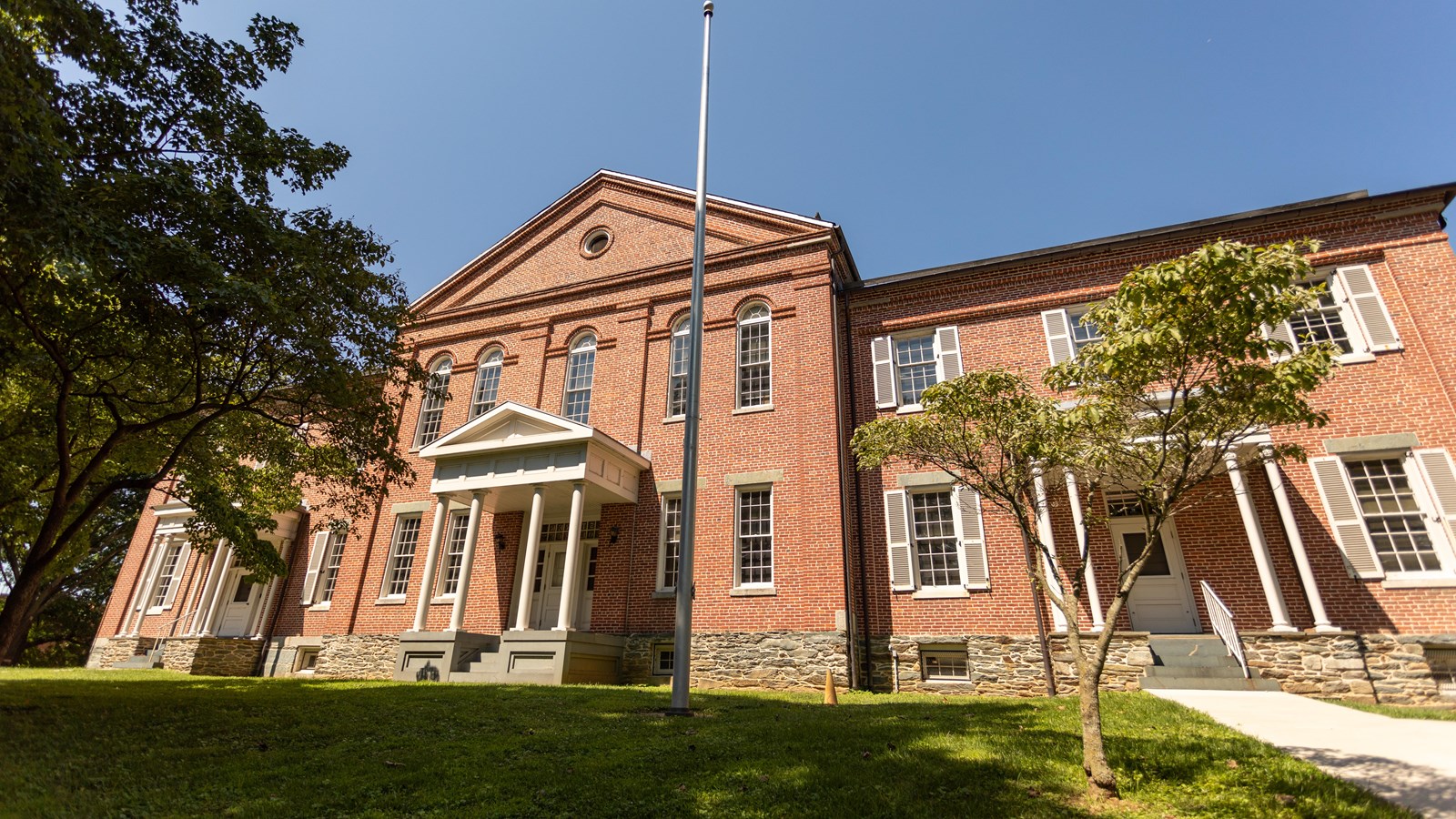Last updated: January 11, 2023
Place
Storer College

NPS/ Claire Hassler
Historical/Interpretive Information/Exhibits, Scenic View/Photo Spot
Following the Civil War there were over 30,000 newly freed slaves in the Shenandoah Valley. Recognizing the need for education, the Freedmen’s Bureau, the Freewill Baptists of New England and John Storer came together and Storer College was born. The school survived for 88 years, enriching the lives of hundreds of students.
Of the four million people freed by the 13th Amendment at the end of the Civil War, most wanted two things—find family members and get an education. A small school in Harpers Ferry soon became a shining example of educational outreach and accomplishment. What began as a one-room missionary school for former slaves grew into a college open to both sexes and all races.
The driving force behind the mission school was Nathan Brackett. With his wife and four teachers, all possessed with boundless energy and missionary zeal, and Lockwood House as a base of operations, Brackett set up primary schools throughout the eastern panhandle of West Virginia. By 1867 Brackett supervised 16 teachers and schools for 2,500 students in the Shenandoah Valley.
The mission grew despite some stiff local resistance. White people tried everything from mob violence to vandalism and slanderous newspaper articles to pulling political strings to shut down the schools. One teacher wrote, “It is unusual for me to go to the post office without being hooted at and twice I have been stoned on the streets at noonday.” Nothing seemed to stop the teachers and their students from going forward. Fifty years later Nathan Brackett’s daughter, also a teacher, said, “Though storms of misunderstanding might rage outside the gate, within the campus all was calm and quiet. It was a little heaven.”
A New Beginning
The Freewill Baptist mission school in Harpers Ferry came to the attention of John Storer, a wealthy businessman in Maine. Storer offered a $10,000 matching grant to the Freewill Baptists. An intense effort to raise donations, mortgage assets and seek government funds added up to $10,000 the day before Storer’s offer expired.
Storer College created a safe place for education in a world where none had existed before. It was a place to learn to read and write, to teach others, and to develop marketable skills. By 1869 the college expanded across Camp Hill in Harpers Ferry and added three more government buildings. Fundraising slowly resulted in more campus buildings as enrollment grew and African American teachers and ministers joined the faculty.
Of all the benefits that Storer provided to its students, perhaps the most valuable was a sense of community. The college owned land in and around the town and profited from a summer boarding house business. By leveraging funds and selling surplus property to graduates and their families, Storer College enabled 75% of Harpers Ferry’s black citizens to own real estate. In 1892 the school newspaper declared, “When the time comes that the colored people of the South live in their own houses, cultivate their own farms, and read their own ballots, there will no longer be a race problem.” Another valuable sense of community extended far beyond physical property. As one former student put it, “Here you will gain new understanding of community living and of friendships.”
Students’ children, grandchildren, and great-grandchildren found a haven of hope in the dark days of segregation. Graduates left Storer with the education, training, and perhaps most importantly, a sense of self-worth to make their way in an unsympathetic society.
The End
In 1954, the Supreme Court’s Brown v. Board decision ended segregation in public schools. The next year West Virginia’s Board of Education recommended ending the $20,000 annual stipend for Storer. The board preferred to support state sponsored schools that were centrally located with modern buildings and more students, and without debt and religious overtones. Finally, Storer College closed its doors in 1955. The school had provided an education to more than 7,000 students.
It’s hard to convey the immense effort it took to open, grow and sustain Storer College for nearly 90 years. Storer is a heroic story of overcoming seemingly insurmountable problems, and it is a testament to the courage, faith, vision and hard work of its founders, administrators, students, alumni and supporters.
The Legacy of Storer College
A very small school started in 1865 with a straightforward mission: to provide an education to former slaves. For 25 years Storer College was the only school in West Virginia where any person of color could get an education beyond the primary level. In a quiet though important way, Storer symbolized something seldom seen today; the epitome of selflessness and a willingness to sacrifice for the benefit of mankind. The students and staff embodied the Storer College motto:
Labor Omnia Vincit
(Work Conquers All)
